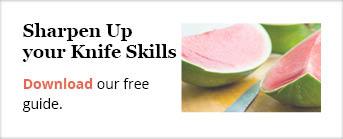
Sometimes you just never know what you’re going to find in those less-frequently accessed corners of your kitchen drawers. In our case, it was the discovery of knives made by a family whose knifemaking goes back nearly 600 years!
My husband Jon, lived and worked in Tokyo from 1990-1993. While there, he embarked on all sorts of adventures, exploring the country and learning as much about the culture as he could. Since Japan is known for quality knives the world over, he just couldn’t resist visiting Aritsugu, a knifemaker at the Nishiki Market, when he was in the city of Kyoto.
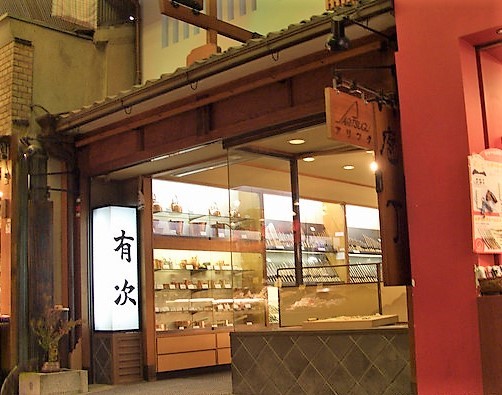
Founded by Fujiwara Aritsugu in 1560, Aritsugu is one of the oldest knifemaking families in Japan. Initially involved in the production of swords, they switched their primary production to the pointed knives that were used to carve statues of Buddha in the 17th and 18th centuries. Finally, Aritsugu began to focus more on kitchen knives as the demand started to grow in the late 1800s. Incredibly, the family is now in its 18th generation of knifemaking!
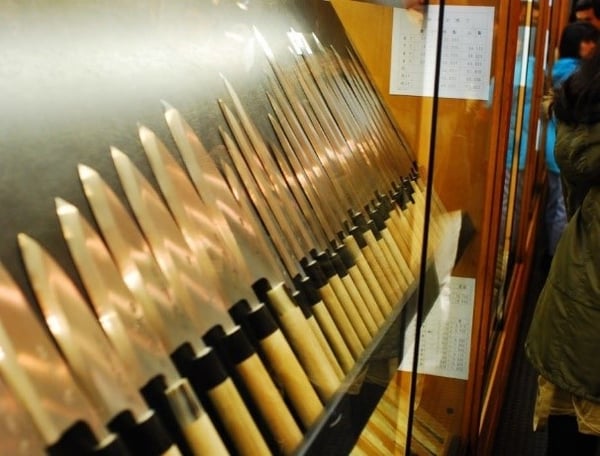
In doing some research, I found a quote (translated) from the current President of Aritsugu that I absolutely love:
"In a sense a knife has a soul and will evolve with you. It is a mirror of reflection for you as a cook and I hope that you will nurture and take special care of your knife as a lifelong partner."
I think this will resonate with anyone who loves to cook and loves the knives they use!
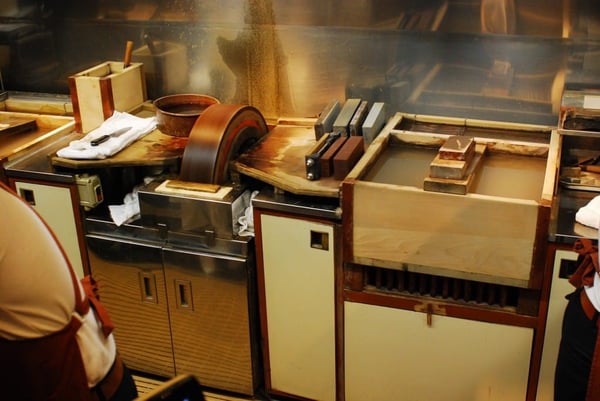
Over the years, the five knives Jon purchased were used occasionally, but not on any sort of regular basis. After we got married in 1998, I found them interesting and would pick one or two of them up once in a while, especially when I wanted to slice cleanly and accurately through a nice piece of fish. For the most part, though, they remained largely forgotten, at the back of our knife drawer.
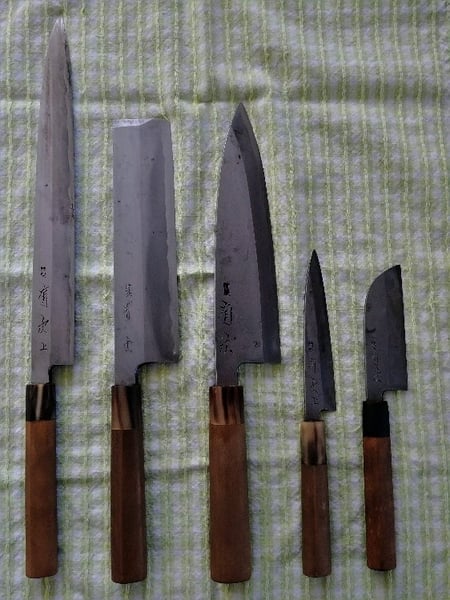
Then I brought my husband to a Knife Skills class at The Chopping Block. Knowing Chef Sam Goldbroch’s affection for Japanese knives, Jon brought our knives along for him to take a look at. Sam was so enthusiastic when he saw the knives, we decided it was time to learn more about them and how to best use them.
Since so much time had passed since the knives were used, we needed to get them cleaned up and sharpened. It just so happened that Town Cutler, a new knife shop with a special focus on Japanese-style knives had opened up right here in Chicago just a couple of weeks before. We visited and were so impressed! To quote their website, they are “makers, service providers, and a retailer of all things cutlery.” Their space is bright and open, with beautiful knives lining the walls, many of their own making. Galen (the owner/founder) was so helpful as we showed him our knives. He agreed to take care of them for us, and we picked our knives up a week later. They looked fantastic! We took them home, along with some advice on how to continue to care for these carbon steel knives so they wouldn’t rust: wash AND dry immediately after use, then apply a thin film of mineral oil. And because they are single-bevel, do not hone them with a steel. So far that advice has served us well!
Looking at the knives carefully – and after some research, because a lot had been forgotten since they were purchased - we could see that the larger Japanese characters (Kanji) along the blade are all the same, translating to “Aritsugu” as manufacturer. We also noticed that there were smaller sets of Kanji above the Aritsugu name and came to find out that those indicate the name of the person who actually made each knife. What a treasure trove of history!
Ultimately, we now have five absolutely gorgeous Aritsugu knives that we actually use. They are all razor-sharp, single-bevel high carbon steel knives with magnolia handles and a water buffalo bone bolster. Here is a little summary of what we learned about each:
Yanagiba, sometimes shortened to Yanagi in the West (also known as Shobu), 290 mm. Traditional sashimi slicing knife. Designed for slicing raw fish, can also be used for slicing meats.

Usuba (also known as Kakugata Usaba, “kaku” meaning “square”), 210 mm. Rectangular, thin blade knife for slicing and chopping vegetables.

Deba, 210mm. Very heavy and thick, designed for cutting and fileting fish. Can also be used for butchering poultry, although cutting through bone is not recommended.

Hiraki (also known as Hiraki Bocho), 130 mm. Designed for paring shellfish. Can also be used for paring other items.

Muki, 100 mm. Small blade designed for peeling, especially smaller items. “Muki” or “muku” translates to “peeling” or “peel”.

So take a good look through your kitchen drawers, you never know what treasure you may find!
If you would like to learn more about knives, check out an upcoming Knife Skills class at The Chopping Block! You will leave not only well-educated for your next knife purchase and better skilled in the kitchen – but you’ll have a bag full of chopped vegetables to use in your next meal!
Sign up for one of our upcoming Knife Skills sessions!
Want to become more proficient with a knife at home? Download our free Knife Skills 101 guide.

